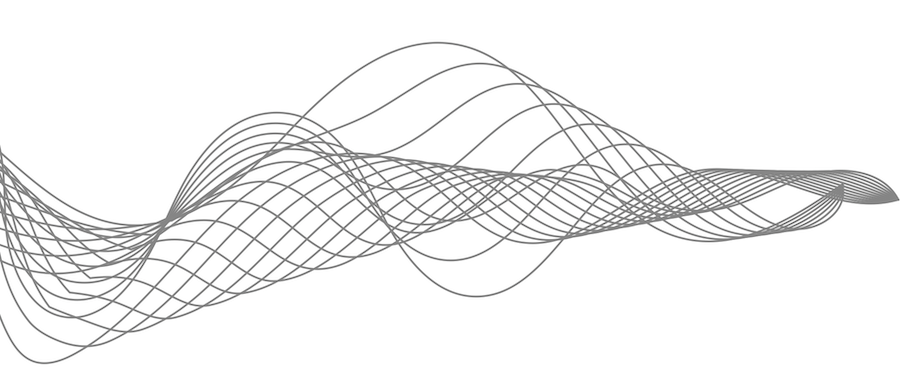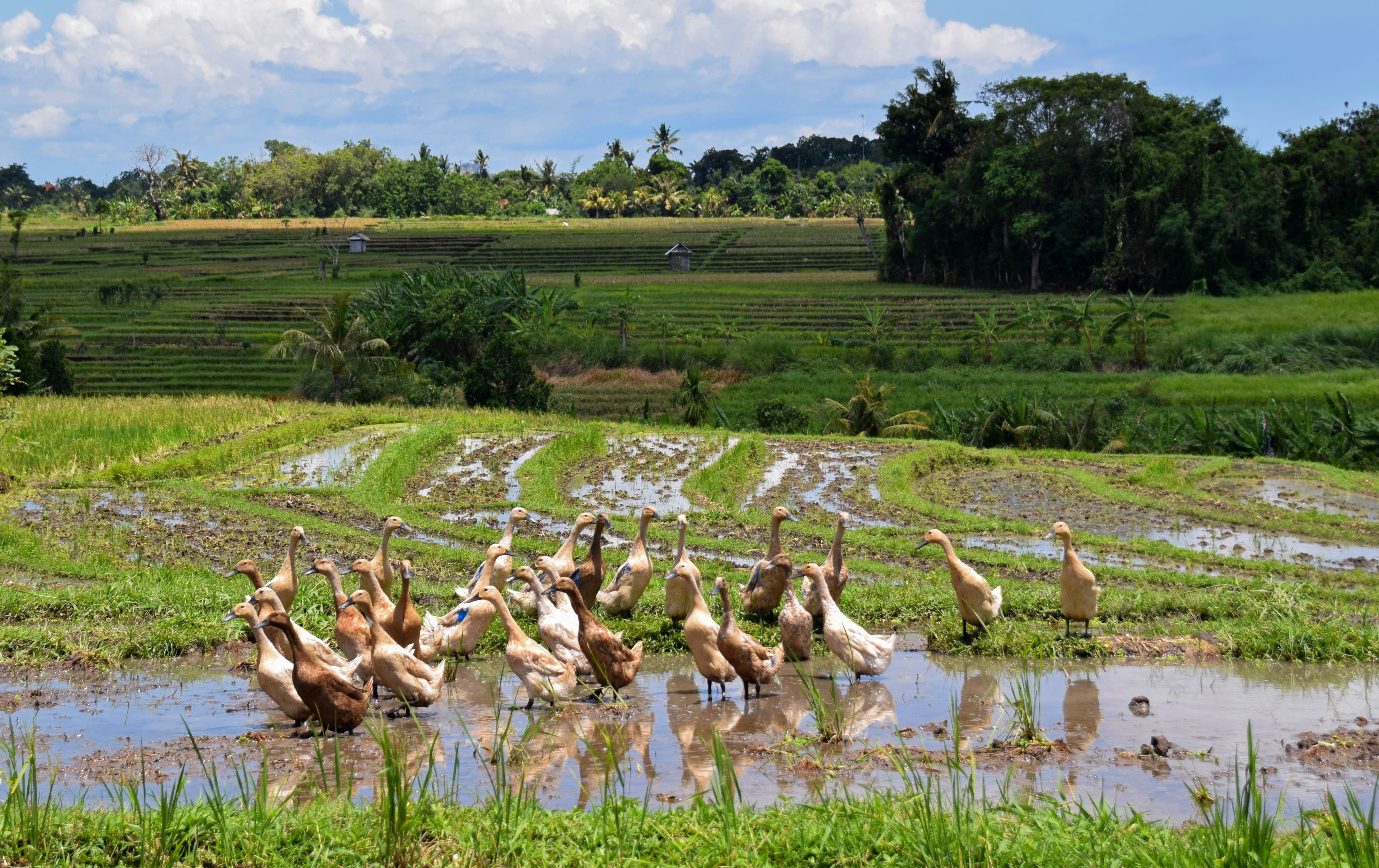Description of typical situation
In large parts of Asia, mixed crop-livestock systems integrate rice production, livestock (poultry, ducks, geese, and pigs), aquaculture, fruits and vegetables, and cash crops. These systems are, for example, found in Bangladesh, China, India, Indonesia, Malaysia, Thailand, Myanmar, and Vietnam. Such farming systems are known as integrated farming systems, referring to the high level of integration among farm activities.
Despite a global trend toward specialization of farming systems, these integrated, smallholder mixed-crop livestock systems continue to be found in regions with high water availability, i.e., river deltas and regions with high precipitation. Farms are small (0.5–3 ha), labor is predominantly provided by household members, land for farm extension is limited, and farm activities are generally market-oriented, though production of rice for household consumption is an important objective. Integration of the different components of the system is achieved through the recycling of nutrients and organic matter: Livestock manure is either applied or deposited directly to (on) the crops or used to fertilize fish ponds, with the sediment of the ponds used as a fertilizer. Crop residues and household wastes may be used for livestock feeding. For example, in the Mekong Delta of Vietnam, these integrated farming systems developed from subsistence-oriented rice monoculture, where the livestock component grew rapidly in response to the market demand for livestock products, fruit and vegetables, and cash crops. The farm activities in such integrated systems are quite labor-intensive and are intensifying in response to increasing market demands and the need to support livelihoods.
Common environmental issues
Integrated farming systems are at risk of accumulating nitrogen and phosphorus through the import of synthetic fertilizers and concentrate feeds as well as inadequate management of nutrients. For example, authors reported the use of soybean meal and wheat flour from Argentina, maize gluten meal from Brazil, palm kernel expeller from the Philippines, and rapeseed meal from India as feed ingredients for poultry and pigs in Vietnam. The use of synthetic fertilizer was also reported to contribute to nitrogen pollution. Such nutrient concentrations cause pollution of soil, water, and air, with repercussions on biodiversity, climate, and human health (Principles 4 and 5).
Globally, across all systems, pigs and poultry contribute about 9% and 8%, respectively, to global (GHG) emissions associated with livestock. This contribution is mainly through emissions associated with feed (60%) and manure storage and processing (27%). It is also reported that the pig production component of integrated systems had a higher GHG emission than specialized pig production systems (context 5). (Principles 3, 4, 5 and 6)
The intensification of the livestock component of integrated farming systems will result in increased feeding of concentrates, which will likely consist of grown maize, soy, wheat, and barley. The resulting pressure on land and water, land use change, and biodiversity losses tendentially caused by feed production are important issues associated with production in this context (Principle 4).
Common animal health issues
There is a strong link between the occurrence of livestock diseases and the environment in which the animals are raised and kept, particularly related to the pig and poultry production systems and farm size. Smallholders production systems are usually linked to poor hygiene and low biosecurity with few barriers to prevent contacts between other animals, humans and wildlife. Particular biosecurity challenges arise from the fact that animals are reared outdoors, which increases the chances of contact with disease vectors including wild birds, rodents, and insects. his facilitates disease transmission from wildlife to livestock, from livestock to livestock, and livestock to human. A typical example of zoonotic disease affecting smallholders is trichinosis, a parasitic disease circulating in wild and domestic animals such as rats, pigs, and wild pigs, and occasionally infecting human through the consumption of inadequately cooked, infected pork. Another example is avian influenza occurrence in small holders in South East Asia, potentially via mixing of wild and domestic birds and amplification and spread of highly pathogenic strains in poultry with production and public health impacts (Principle 5).
Increased animal density in commercially oriented systems can also compromise hygiene and increase the use of excessive antimicrobials, contributing to AMR (Principle 6).Other biosecurity challenges arise from the fact that livestock manure may introduce enteric foodborne pathogens to the soil, which could contaminate fresh produce (Principle 4).
These systems have potential for recycling nutrients and improving the soil, and are frequently associated with organic systems. However, although animals outdoor may express their natural behaviors, they are frequently kept without shelter or protection from predators which compromise animal welfare recommendations (Principle 3). It is important keep in mind that these situations typically involve new or intensifying species interactions between wild and domestic animals, with new opportunities and lack of protective immunity. Animals at stress tend to have reduced resistance to disease, which can exacerbate pathogen flare-up and even spillover to humans as emerging infectious diseases.
Strengthening networks on disease preparedness and diagnostic capacities are key elements to ensuring the protection of animal health. Understanding animal value chains within the country and with neighboring countries is essential for improved risk management and assessing entry points for stakeholders in the network to play a role in risk reduction (Principle 7).
Common social issues
Limited access to Resources: Small livestock owners often face challenges in accessing essential resources such as land, water, feed, and veterinary services. Limited access to these resources can constrain their ability to maintain healthy and productive livestock, thereby impacting their livelihoods and economic opportunities within integrated farming systems.
Challenges in Accessing Markets and Participating Value Chains: Accessing markets, negotiating fair prices, and meaningful participation in livestock value chains are all challenging for small livestock owners. Weak market linkages, limited market information, and unfair trade practices can exacerbate inequalities and marginalization, hindering the economic inclusion of smallholders in the livestock sector.
Unequal Access Technology and Innovation: Small livestock owners may have limited access to appropriate technologies, innovations, and extension services to improve livestock management practices and enhance productivity.
Livelihood Diversification: Heavy reliance on livestock rearing as their primary source of income, leaves small livestock owners vulnerable to market fluctuations, disease outbreaks, and environmental risks.
Gender Inequality: Gender disparities persist among small livestock owners, with women often facing unequal access to resources, decision-making power, and benefits within integrated farming systems. This is due to existing social norms that influence daily practices and often still inform policies and practice. Weak governance structures, inadequate policies, and institutional constraints can undermine the social inclusion of small livestock owners, and women in particular, in integrated farming systems.
Health and Safety: Small livestock owners may face occupational health and safety risks associated with livestock handling, exposure to agrochemicals, and zoonotic diseases.

